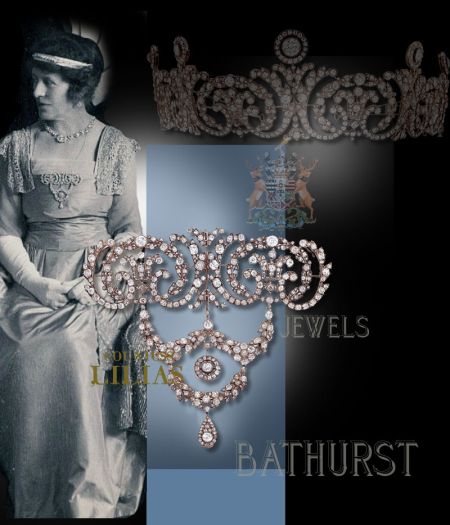Shortly before her death in August 1997, Diana requested that the dress be sold in a charity auction. Florida-based businesswoman Maureen Dunkel bought it for £100,000 in New York in June 1997, along with nine other dresses formerly owned by the Princess.
The Travolta dress was the most expensive one sold at the auction. When she went bankrupt in 2011, Dunkel was forced to put them up for auction, but the Travolta dress was one of six that were not sold It was finally auctioned off by Kerry Taylor in London on 19 March 2013, fetching £240,000 ($362,424) and again being the most expensive auctioned dress. It was bought by „a British gentleman as a surprise to cheer up his wife“.
In 2019, it sold for £264,000 ($325,317) to Historic Royal Palaces a charity which looks after royal memorabilia including clothing and artifacts. The dress has joined the Royal Ceremonial Dress Collection and belongs to the palace.

Designed for the Princess by fashion designer Victor Edelstein, this striking midnight blue dress is now on public display at Kensington Palace to celebrate the reopening of the palace this summer.
The midnight blue velvet gown became legendary when the Princess wore it to a White House Gala in 1985 and took to the dancefloor with John Travolta. Images of the Princess and the Hollywood actor dancing together made headlines around the world, securing a place in fashion history for the stunning gown
Following over four months of closure during lockdown, Kensington Palace will be reopening its doors once more to welcome visitors from Thursday, 30 July. To celebrate the re-opening, the famous ‘Travolta dress’, worn by the late Diana, Princess of Wales, will go on display at the palace for the first time since it was acquired by Historic Royal Palaces at auction in 2019.
The midnight blue velvet gown, designed by Victor Edelstein, became legendary when the Princess wore it to a White House Gala in 1985 and took to the dance floor with John Travolta. Images of the Princess and the Hollywood actor dancing together made headlines around the world, securing a place in fashion history for the stunning gown. In 2019, it was acquired by independent charity Historic Royal Palaces and has somewhat fittingly been in conservation ‘quarantine’ ever since, to protect it for posterity. Like Kensington Palace itself, the dress is now coming out of isolation, and will be on display at the Princess’s former home this Summer for visitors to enjoy.
Famously the birthplace of Queen Victoria, Kensington Palace has been a royal residence for over 300 years. Lavish Georgian parties were held within its spectacular state apartments in the eighteenth century. A hundred years later, in 1837, a young Princess Victoria woke up at the palace to the news of her accession to the throne. In recent years the palace has been home to Princess Margaret – sister of HM Queen Elizabeth II – and Diana, Princess of Wales. It is currently the London home of TRH The Duke and Duchess of Cambridge.
The palace closed in March 2020 in response to the Covid-19 pandemic and has since been quiet, with the shutters of its famous galleries closed to protect the remarkable collections on display. Palaces staff have returned to Kensington this week to gradually ‘reawaken’ the palace and install and array of new measures to ensure returning visitors feel safe. Hand sanitiser dispensers and social distancing signage have been installed across the site. Visitors are asked to book in advance, to help Historic Royal Palaces manage capacity, so visitors can enjoy their time at court with plenty of space. The State Apartments and the rooms Queen Victoria grew up in will both be open, with visitors asked to follow a one-way route through the palace.
Historic Royal Palaces, the independent charity that cares for Kensington Palace, is hoping visitors will show their support for its national treasures by returning for a visit this Summer. The charity is dependent on visitor income and facing a £98 million shortfall in its finances following the pandemic. The return of visitors will make a vital contribution to the charity’s work caring for Kensington Palace and sharing its stories with the public.
Sam Owen, Head of Kensington Palace, said,
‘We are delighted to be welcoming visitors back to the palace again this Thursday. Kensington Palace was built to be enjoyed by hundreds of people and it’s been sad to see it so quiet over the past couple of months. Myself and the team can’t wait to welcome visitors back again and give them a suitably royal welcome. We’ve never needed their support more – each visit is an important contribution to help us maintain this wonderful building for generations to come.’
Diana Princess of Wales Sapphire and Diamond Cluster Brooch Choker| Royal Jewels History

